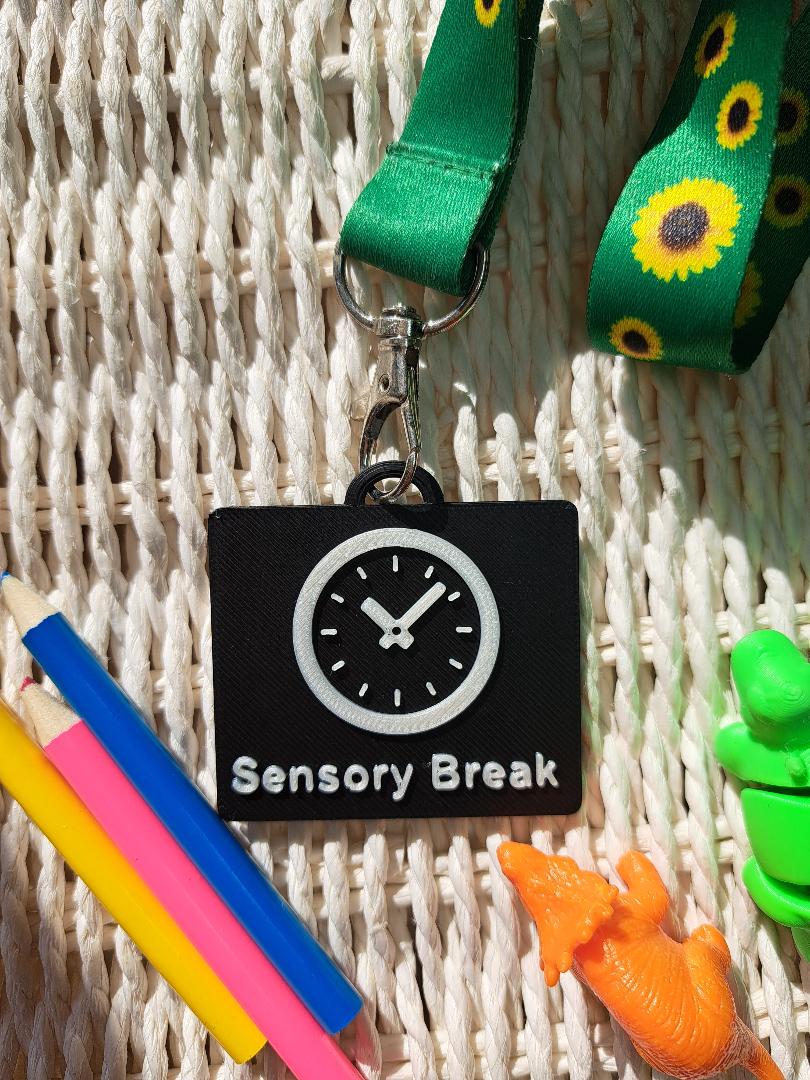
How to Introduce Visual Communication Tags into Your Life
Share
Communication is one of the most fundamental aspects of human connection. However, for many children - particularly those who are autistic - verbal communication can be a challenge. In these situations, visual communication tools, such as communication tags, can play a vital role in bridging the gap and helping children express their needs, emotions, and thoughts more effectively.
In today’s post, we’ll explore how you can introduce visual communication tags into your daily routine, how they can support non-verbal communication, and how they can help your child better understand and interact with the world around them.

What Are Visual Communication Tags?
Visual communication tags are small, physical tools that use images, symbols, or words to help non-verbal children communicate their feelings, needs, and desires. These tags are typically attached to items, objects, or even worn as accessories, offering a quick and clear way to express important messages.
For example, a tag with a happy face might indicate that your child is feeling joyful, while a sad face could signal that they are upset. Other common tags might include images like ‘toilet’, ‘food’, or ‘help’, helping your child to express basic needs and emotions that they might otherwise struggle to communicate.
Why Visual Communication Tags Work
Breaking Down Barriers: Verbal communication can be difficult for children with speech delays, autism, or other communication differences. Visual communication tags offer an alternative, easy-to-understand method that removes the need for spoken words. This helps children feel more in control of their interactions and reduces frustration.
Encouraging Independence: Visual tags empower children to make choices for themselves. By using a communication tag to ask for what they need or express how they feel, children can begin to advocate for themselves and develop greater independence in daily routines.
Promoting Emotional Understanding: Emotional regulation can be difficult, especially for non-verbal children who may struggle to articulate what they’re feeling. Visual communication tags can help children better understand their emotions and provide them with a way to express feelings such as happiness, anger, or anxiety.
Building Routine and Structure: Consistency is key when introducing new communication tools. Using the same set of visual tags throughout the day can create a structured environment where your child knows exactly how to communicate their needs at different times (e.g., mealtimes, bath time, etc.). This structure helps build a sense of security and confidence.

How to Introduce Visual Communication Tags into Your Routine
Start Simple: Begin with a few basic tags that represent common needs or emotions. Focus on essential aspects of communication, such as hunger, toileting, and emotions. Over time, you can introduce more tags as your child becomes more confident using them.
Incorporate Tags into Daily Life: Place visual tags in areas where they’ll be most useful. For instance, keep tags near the kitchen table for mealtimes or in the bathroom for toileting needs. Keep them visible and within easy reach, so your child can access them quickly when needed.
Model Usage: Children learn by example, so it’s important to demonstrate how to use the tags. Show your child how to select and use a tag in different situations (e.g., hand them the “hungry” tag when it’s time to eat). Make it part of your daily routine and turn it into a positive, engaging experience.
Use Positive Reinforcement: Whenever your child uses a visual tag, offer praise or a small reward. Positive reinforcement helps encourage continued use and reinforces that their communication efforts are effective. You might also consider using visual rewards like sticker charts or smiley faces to keep it fun.
Expand Gradually: As your child grows more confident, you can begin to introduce more specific tags that reflect a wider range of emotions or needs. Tags like “tired,” “bored,” or “help me” can give your child additional tools for expressing themselves clearly.
How Visual Communication Tags Support Non-Verbal Communication
For children who are non-verbal or minimally verbal, communication can often feel isolating or frustrating. Visual communication tags offer a simple and direct method to express their needs, enabling them to participate more fully in their environment and interact meaningfully with others.
Here’s how visual tags can support non-verbal communication:
-
Clear Expression of Needs: Symbols and pictures allow children to express essential needs such as hunger, thirst, or needing help. This reduces frustration for both the child and their caregivers.
-
Supports Social Interaction: Tags provide a way for children to initiate interactions. A “play” tag can show they want to engage, while an “angry” or “sad” tag lets others know how they’re feeling without needing to speak.
-
Facilitates Emotional Awareness: Many non-verbal children struggle to identify and express their emotions. Visual tags can help build emotional literacy by associating pictures or symbols with specific feelings.
-
Boosts Confidence: Having a reliable way to communicate helps children feel more confident and secure, which positively affects their emotional wellbeing and social development.
Final Thoughts
Introducing visual communication tags into your everyday life can be truly transformative for non-verbal or minimally verbal children. These powerful yet simple tools promote communication, independence, and emotional understanding. With consistency and encouragement, your child will have more opportunities to express themselves, feel heard, and be understood.
If you’re looking for high-quality, customisable communication tags, our 3D-printed tags are designed to be durable, practical, and supportive of your child’s communication journey. Whether you’re starting with basic emotion tags or moving towards more specific needs, our range is perfect for building a more communicative, inclusive environment at home or school.

